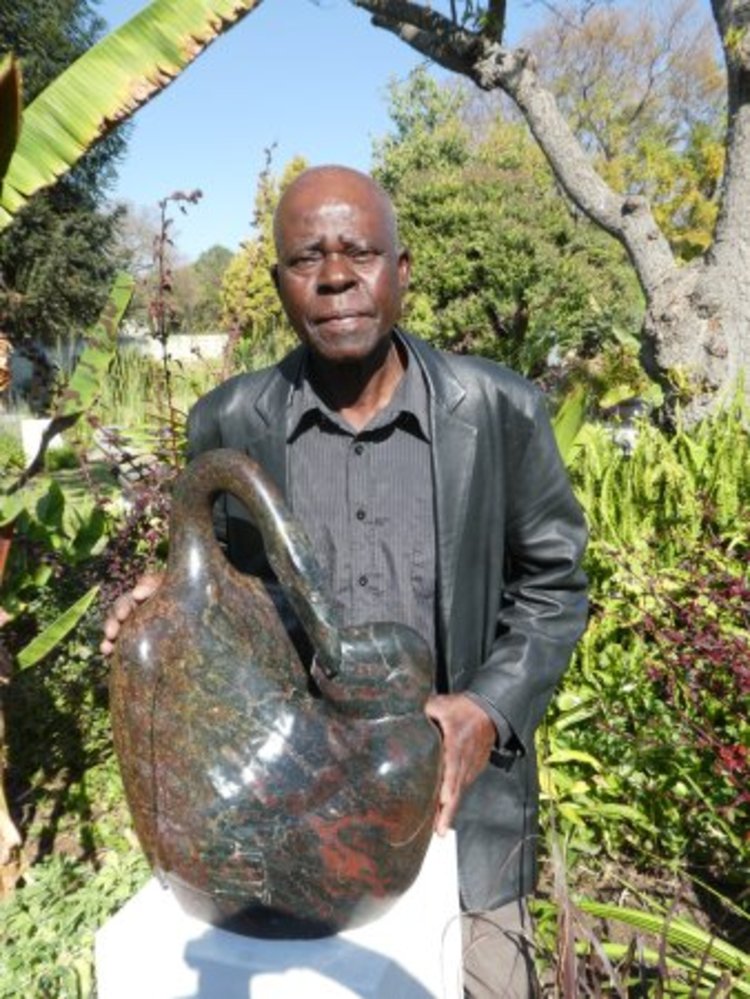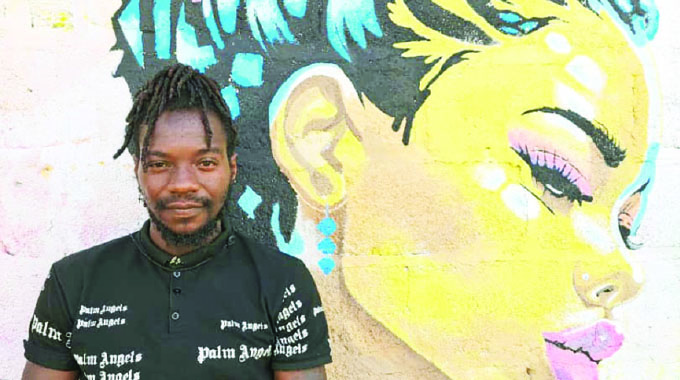Mubayi goes international

Sylvester Mubayi is a veteran in the visual art industry with a career spanning over five decades. He is a mentor with Friends Forever artists, and deliberately so, he prioritises giving support and inspiration to the most talented younger artists in his field, the stone sculpture of Zimbabwe. His pieces, which are representative of local spiritual practices, wildlife, humanity and socio- cultural relations are not just dazzling to the eye but are also laden with meaning.
This year he was selected to become one of the artists that represented Zimbabwe in the 57th Venice Biennale a prestigious cultural platform which attracts artists, curators, art collectors, art critics and directors from across the globe. Established in 1895, the Biennale has an attendance today of over 500,000 visitors at the Art Exhibition.
The history of the Venice Biennale dates back from 1895, when the first International Art Exhibition was organised.
Zimbabwe through the support of our Ministry has been able to consistently participate on this platform since its first showing in 2011.
This week sculpting Icon, Sylvester Mubayi shared with us his experience of being at the 57th edition of the Venice Biennale.
“The experience of traveling to Venice and having my work exposed to art appreciators and collectors from all over the world was an amazing one.
“I got to witness art from all over the world which was unique in its own way as it expressed the way of life and way of doing things from different nations. I visited pavilions of other African countries; Nigeria (which has made its debut at the Biennale for the first time in history), Kenya, Angola and South Africa. These visits inspired me as an artist to further develop and enhance the kind of work that I produce.
“We also had a large number of people coming in to view and interact with our work and this made all the work and effort we put in preparing for the Pavilion worth it,” said Mubayi
He added, “I would like to extend my gratitude to the Executive Director at the National Gallery of Zimbabwe, Mrs Doreen Sibanda and the Deputy Director Mr Raphael Chikukwa for affording me with such an opportunity.
“I was shocked when I received the news that I had been selected to go to the Venice Biennale and represent the country at an international level. I am also grateful to my fellow artists who were with me in Venice as we were able to create amazing works that attracted and are still attracting wide variety of visitors to the Zimbabwean Pavilion.”
Mubayi gave us an insight into some of the work that he was commissioned to do for the Zimbabwean Pavilion in Venice project.
“My work is about the people of Zimbabwe, their rituals, how they live and what they eat. My focus is on those people who follow age old traditions and those who believe in the sacred inhibiting the country and spirit mediums. The folktales, proverbs and idioms that were relayed to us while we sat shelling maize around the fire in the evenings are the main source of inspiration for my sculpture. My work is a chronology of how people in Zimbabwe live and work together,” said Mubayi
Some of his outstanding are Snail Crossing the River, Nhauriranwa, War Victim and Spirit Buffalo/Mudzimu We Nyathi.
The Snail Crossing the River installation is about a community`s involvement in the upbringing of children.
Long ago people took dry tree trunks and made canoes which were then used to transport families across flooded rivers.
The snail here traverses the waters with orphaned children safe in the shell.
The parents of these orphaned children were swept away by violent flood waters.
The children are taken to where they will be well taken care of. The snail represents ancestral spirits.
The war victim is about an individual who lost limbs during the war.
It is a warning about the evils of war and encourages people to live in peace and harmony and to find ways to resolving conflicts that do not involve violence and unnecessary bloodshed.
The Buffalo is a celebration of totems, clans, kinship and kingship.
This is a tribute to the Nyathi Spirit. This is the only totem in Zimbabwe where they have female Chieftains.
It is also a tribute to the respect people have to give their forbearers.
In the past for the rains to come abundantly, rituals were done and people realised good harvests. It is important that we continue to observe and preserve such rituals for many generations to come.
While art has taken the veteran artist to places some people can only dream of visiting, his journey of over five decades has had its ups and downs. Growing up during the colonial period in Chiota, Mubayi worked as a tobacco grader after leaving school; in 1966 he moved to Salisbury to look for work at the Chibuku Breweries.
He joined the Tengenenge Sculpture Community in 1967 as one of its first members, and later worked at the Workshop School founded by Frank McEwen. In 1969 he was awarded Oppenheimer Memorial Trust Award for Sculpture in Durban, South Africa. He currently lives and works in Chitungwiza
“Becoming an artist was a life changing decision I made as I was able to buy my own house and other properties, as back then you if you sold a piece it was worth much more.
“I would not have been able do all of this if I was still working in the field. To the youngsters who would like to pursue art as a career, I would like to advise them that they need to be dedicated and not give up until they achieve their goals.
“Success in this field comes from hard work, being able to soldier through hard times and to continuously create something that is unique and new that will captivate the audience,” said Mubayi.
Other artists who lit up the Zimbabwean Pavilion at the world’s biggest international arts exhibition also referred to as the Olympics of the art world include Admire Kamudzengerere, Charles Bhebhe and Dana Whabira.
Admire Kamudzengerere, is a young outstanding expressive painter.
His selection and use of colour compliments the subject matter that he seeks to put across to the viewer.
Charles Bhebhe, is also a young prolific Bulawayo-based visual artist who profiles the ordinary Zimbabwean person in his observations through the use of intricate colours in his paintings.
On the other hand Dana Whabira is an architect, artist, a cultural facilitator and curator of the visual arts and related interfaces.
She runs Njelele Art Station, which affords artists space to interact, experiment and showcase their creativity. She brings to this year’s Zimbabwe Pavilion at the Venice Biennale some refreshing angles to the story of Zimbabwe.
The theme for the Zimbabwean Pavilion is: Deconstructing Boundaries: Exploring Ideas of Belonging.
It is a continuation of the interrogatory nature that has characterized previous Zimbabwe Pavilions at the Venice Biennale.
The Zimbabwe Pavilion in Venice will be on show in Venice until 26 November 2017.








Comments